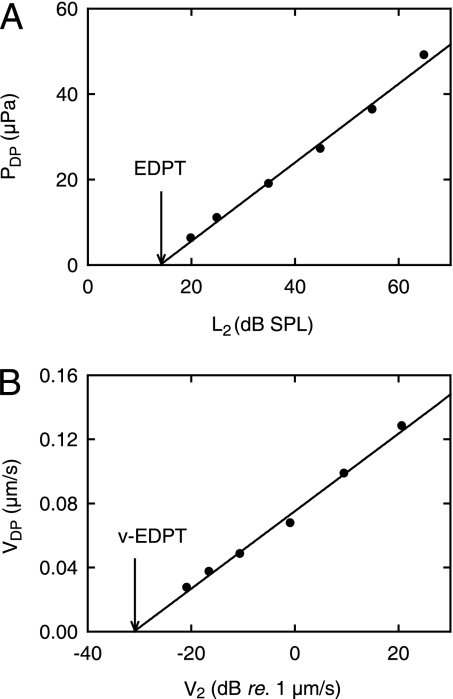Fig. 5.
Dependence of DPOAEs on primary stimulus level. (A) DPOAE sound pressure (PDP) as a function of SPL (L2) at the stimulus frequency, f2, of the second primary tone. Pressures were measured in a closed sound field. (B) DPOAE umbo velocity (VDP) as a function of umbo velocity (V2) at f2. Velocities were measured in an open sound field. The stimulus parameters were as follows: f2 = 5.5 kHz, f1 = 4.6 kHz, L2 = 25–65 dB SPL, and L1 = 0.4L2 + 39 dB. The lowest measured pressure amplitude at 2f1 − f2 = 3.7 kHz is 6 μPa, or −10.5 dB SPL. The lowest measured vibration amplitude at 2f1 − f2 = 3.7 kHz corresponds to a displacement amplitude of 1.18 pm. (A) The intersection of the regression line (r2 = 0.99, slope = 0.92 ± 0.04 μPa/dB SPL) with the abscissa (arrow) yields the so-called (19) EDPT = 14 dB SPL. (B) Correspondingly, the intersection of the regression line (r2 = 0.99, slope = 2.42 ± 0.10 nm/s/dB re. 1 μm/s) with the abscissa (arrow) yields the v-EDPT = 0.0272 μm/s. A reflector was placed on the umbo. (Subject identifier: AS.)

